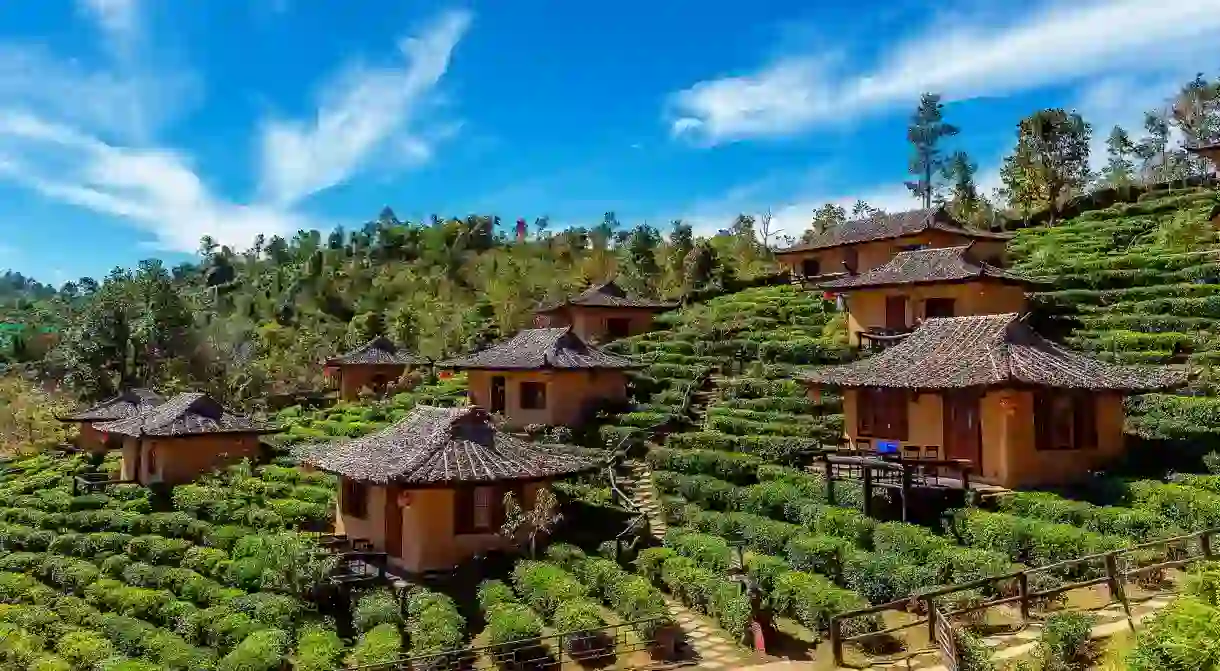How to Spend 48 Hours in Mae Hong Son, Thailand

Mae Hong Son is a rural border town in a beautiful mountainous valley. Whether you’re stopping by while driving the Mae Hong Son loop or you’ve decided to venture further than Pai, there is so much to see and do in Mae Hong Son. Here’s how to spend 48 hours in this diverse and vibrant town.
You can now travel to Mae Hong Son with Culture Trip as part of our 10-day trip to Northern Thailand – carefully planned by our team of travel experts and led by trusted local insiders to bring you a hassle-free, 100% authentic experience.
Day one
Get a bird’s eye view of the town from Wat Phra That Doi Kong Mu

Start your Mae Hong Son adventure with a climb up to the revered Wat Phra That Doi Kong Mu. Not only is this Shan-style temple beautiful, but it also provides breathtaking views of Mae Hong Son and the valley below. Walk around the back of the temple for impressive vistas over the mountain ranges and to explore a local market. There is also a small cafe for refreshments.
Take a break at Little Good Things
Take a break from sightseeing at the quirky and fun Little Good Things cafe and restaurant. Tuck into healthy vegan food or refresh yourself with delicious local coffee. It’s also a great place to relax with a book or to pick up a few souvenirs.
Travel back in time at the Mae Hong Son Living Museum
Spend the afternoon exploring the Mae Hong Son Living Museum, a history capsule of old photographs, local cultural artefacts and architecture. A trip here will provide you with greater insight into the diverse local culture and the town’s colourful history.
Enjoy a few sunset drinks

Head to one of the lakeside bars, such as Sunflower Cafe or the Meeting Bar, for a cold beer or refreshing cocktail, as you watch the sunset after a fun-filled day. Jong Kham Lake is also an ideal place to watch locals practise tai chi and see people go about their day.
Peruse the Walking Street Market
If you are in town between October and February, the Mae Hong Son Walking Street Market is worth checking out. Not only is this a great place to snack on delicious local food at awesome prices, but it is also ideal for picking up a few locally inspired gifts for loved ones back home. Find it along the roads around Jong Kham Lake.
Dinner and drinks at the Salween River Restaurant
When you feel like trying another local hotspot, check out the Salween River Restaurant. This friendly family restaurant has an extensive menu that includes local specialities such as Khao Soi and Burmese tea leaf salad, as well as pizza and burgers. Local beers and bottles of whiskey are served and there is a large library where you can swap books.
Fancy a nightcap?
Stop by the Cross Roads bar, which is frequented by foreigners and hardened Thais alike. It’s a bustling hub of activity, even into the wee hours.
Day two
Morning market

Immerse yourself in local culture at the town’s morning market. Pull up a plastic chair and enjoy a local-style breakfast. Take a walk around the market and see the different produce on sale from local hill tribe communities.
Sutongpe Bridge and the fish cave

Continue your adventure at the Sutongpe Bridge, a bamboo bridge that stretches across lush rice fields. In Mae Hong Son you are never far from nature and the Sutongpe Bridge is a great place to check out the green jungle and sprawling fields. If you want to explore more, take a trip to the fish cave, which has a holy Hindu Nara statue believed to protect the carp.
Visit Wat Chong Kham temple
On the shores of the picturesque Jong Kham Lake is the sacred Wat Chong Kham temple, a significant local landmark that dates back to 1827. The temple itself is beautiful, as is the large Buddha image, gold temple pillars and the 100-year-old jataka paintings. Continue your exploration with a visit to the on-site museum, which has 150-year-old wooden dolls from Myanmar that depict gruesome aspects of the wheel of life.
Got more time? Venture into Ban Rak Thai
If you have more time on your hands, hop on a motorbike and drive to the mesmerising town of Ban Rak Thai. Also known as Mae Awa, this is a stunning tea-growing village and settlement of former Kuo Min Tang fighters from Yunnan Province in China. You’ll also find mud-brick houses and plenty of tea-tasting opportunities here.













